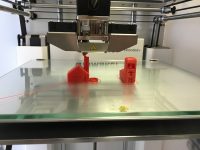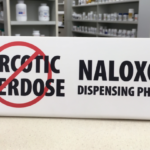You Won’t Believe What a Printer Can Do

3D printing is the latest technology taking the world by storm. From food to mechanical parts and even handguns, just about anything can be printed if you have the right equipment.
And with 3D printers now cheaper than ever before (from under $1,000 in Australia) it might not be long before they become a regular household item.
In the latest advance, pharmaceutical companies are testing the production of prescription drugs using 3D printers. American company Aprecia recently developed an epilepsy drug which can be printed efficiently – and experts say that 3D printers could soon be used to print drugs tailored to individual needs.
Along with legal uses, the technology can be equally useful in the production of illegal guns and illicit drugs.
How Does It Work?
Conventional 3D printers use a ‘blueprint,’ which is downloadable from the internet, together with ‘ink,’ which is the ingredients of the product. So, in order to produce ecstasy pills, users can choose a blueprint and simply feed the ingredients into the printer. Before long, out pop the pills, ready to consume.
Of course, obtaining the ink raises all kinds of legal issues – but according to Glasgow University Professor of Chemistry Lee Cronin, users will not actually have to purchase any illicit substances to print drugs, because:
‘nearly all drugs are made of carbon, hydrogen and oxygen, as well as readily available agents such as vegetable oils and paraffin. With a printer it should be possible that with a relatively small number of inks you can make any organic molecule.’
How Will It Affect the Drug Market?
The technology is set to make obtaining and using drugs a lot safer – as just about anyone will be able to manufacturer pills, removing the need to meet with a dealer, and reducing the risks associated with poisonous fillers and indeterminate purity.
It is also set to make drugs a lot cheaper to produce – not much more than printing a few sheets of paper.
And by removing the need for drug dealers, 3D printers could reduce violent and property crime associated with the drug trade.
3D printing could also spell the end of drug importation – with blueprints readily downloadable anywhere in the world.
Conversely, the availability of 3D print technology could leave large numbers of people susceptible to drug manufacturing charges – especially given that meta-data retention laws now allow law enforcement agencies to access anyone’s personal data without a warrant, leaving those who purchase 3D printers online and download ‘drug blueprints’ susceptible to detection.
Drug Manufacturing
Drug manufacturing is an offence under section 24 of the Drug Misuse and Trafficking Act 1985.
It is defined as knowingly participating in the production of a prohibited drug, and requires something more than just observing the process. Examples of drug manufacturing include:
- Physically assisting in the process, including emptying flasks and disposing of rubbish associated,
- Providing or arranging finance, and
- Providing a location, such as a house or warehouse.
The maximum penalties depend on the type and quantity of drug – but can range from two years in prison and/or a $2,200 fine, to life imprisonment and/or a $550,000 fine.
If 3D printing technology takes off as predicted, it could only be a matter of time before you simply have to load a blueprint and press ‘print’ to get the drugs you want.






